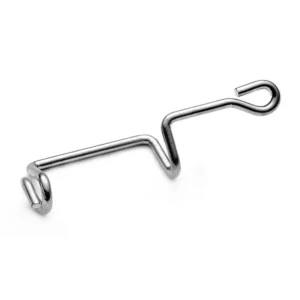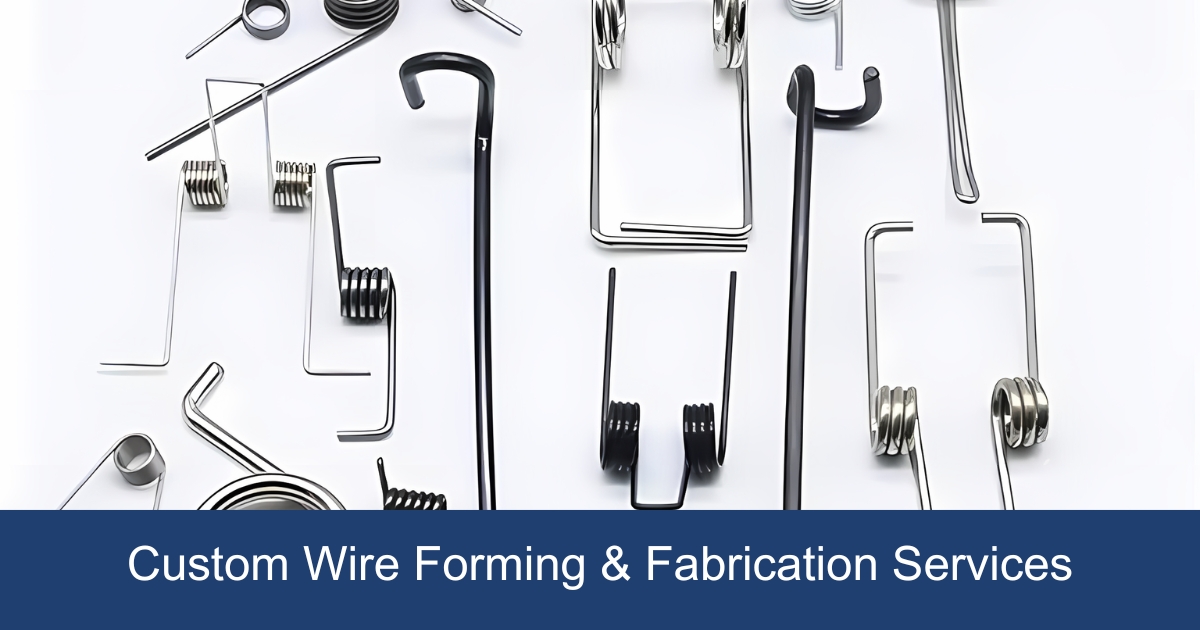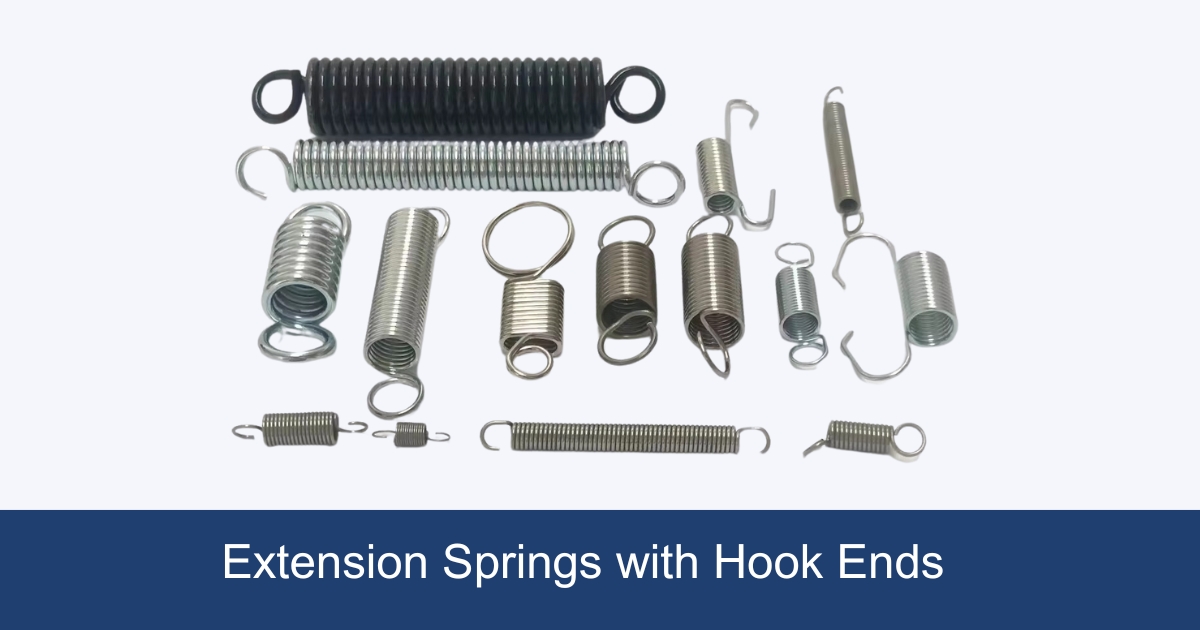
Wire forming is a fascinating manufacturing process that shapes and bends wire into precise configurations, playing a crucial role in various industries. Let’s delve into the complexities, techniques, and machinery behind wire forming, uncovering its significance in our daily lives.
What is Wire Forming?
Wire forming is a process that shapes wire into specific designs for various uses. It’s vital in many sectors like automotive and medical. Techniques include bending and welding, depending on the shape needed. The material type is crucial for the form’s function. Accuracy is key, with technology like CNC being essential for complex designs.
Wire Forming Process Details
Wire forming is a manufacturing process used to create complex shapes from wire. It’s widely used in various industries for producing parts like springs, hooks, wire racks, and custom wire shapes for different applications. Here’s a general overview of the custom wire forming process:
Step 1: Wire Selection The process begins with selecting the appropriate wire material and diameter for the specific application. This decision is based on the required properties of the final product, such as strength, flexibility, corrosion resistance, and aesthetic considerations. The chosen wire material significantly influences the forming process’s parameters, such as the force needed for bending and the type of finishing treatments applicable. Regarding the selection of materials for your custom wire forms, you can refer to this article, hoping it will be of help to you.
Step 2: Straightening Before shaping, the wire must be straightened. Wire is typically fed from a coil into the wire forming machine, where it passes through a series of straightening rollers. These rollers apply pressure to the wire, correcting any bends or curls, ensuring it is perfectly straight for precise forming.
Step 3: Feeding The straightened wire is then automatically fed into the forming area of the machine. The feed rate can be adjusted depending on the wire diameter, material properties, and the complexity of the desired shape. This step is crucial for maintaining consistent production speeds and ensuring the accuracy of the final product.
Step 4: Bending and Shaping This is the core of the custom wire forming process. The machine uses a combination of dies, guides, and forming tools to bend, twist, and shape the wire. CNC wire forming machines are often used for this purpose, offering high precision and flexibility. They can execute multiple bends and complex shapes with a high degree of accuracy by controlling the movement of the wire and the forming tools through programmed instructions.
Step 5: Cutting Depending on the design, the wire may be cut to the required length either before or after forming. In many modern wire forming machines, cutting is integrated into the production process, allowing the wire to be cut precisely at the desired point in the design without stopping the production flow.
Step 6: Secondary Operations Some wire forms may require additional processes, which can sometimes be integrated into the same production line. These can include threading, welding parts together, or adding end features like hooks or eyes. The capability to perform these operations depends on the machinery and tooling available.
Step 7: Quality Control Throughout the production process, quality control measures are in place to ensure that each wire form meets the specified dimensions and tolerances. Advanced machines may include sensors and vision systems to detect any defects or deviations from the design specifications in real-time, allowing for immediate corrections.
Wire Forming Tolerances
In custom wire forming, precision is crucial. Even minor deviations from tolerances can cause performance problems, including failure or inefficiency. This demands advanced technology, strict quality control, and thorough knowledge of material behavior.
Factors Influencing Tolerances
Several factors influence the achievable tolerances in wire forming processes:
- Material Type: Different materials exhibit varying degrees of elasticity, strength, and memory, which can affect how closely tolerances can be maintained.
- Wire Diameter: Larger diameters may present challenges in achieving tight bends without causing material deformation beyond acceptable limits.
- Design Complexity: More intricate designs demand higher precision to ensure each bend, cut, and coil contributes correctly to the final shape.
Zigoal’s Precision Wire Diameter Tolerances
Our state-of-the-art precision in wire diameter is showcased below, where we push the boundaries of standard tolerances to meet the evolving needs of our clients:
| Wire Diameter (mm) | Tolerance (mm) | Wire Diameter (inch) | Tolerance (inch) |
|---|---|---|---|
| 0.025 – 0.200 | ±0.005 | .001 – .007 | ±.0002 |
| 0.201 – 0.375 | ±0.007 | .008 – .014 | ±.0003 |
| 0.376 – 0.810 | ±0.009 | .015 – .031 | ±.00035 |
| 0.811 – 1.219 | ±0.012 | .032 – .047 | ±.00045 |
| 1.220 – 2.029 | ±0.014 | .048 – .079 | ±.00055 |
| 2.030 – 3.249 | ±0.024 | .080 – .127 | ±.00095 |
| 4.470 – 5.889 | ±0.037 | .178 – .231 | ±.00145 |
| 5.890 – 7.999 | ±0.050 | .232 – .314 | ±.00195 |
| 8.000 – 9.999 | ±0.062 | .315 – .394 | ±.00245 |
| 10.00 – 20.99 | ±0.075 | .395 – .826 | ±.00295 |
This table is a testament to our relentless pursuit of precision, leveraging advanced technologies and customized tooling to exceed standard tolerances wherever possible.
Beyond Standard Tolerances
Our engineering prowess at Zigoal allows us to achieve specialized tolerances beyond those listed, through:
- Customized Machining and Tooling: Tailored solutions that address unique client requirements for precision.
- Alternate Manufacturing Processes: Innovative approaches that enhance the precision and quality of wire forms.
- Rigorous Quality Control: Ensuring each product not only meets but exceeds the expected tolerances.
Types of Wire Form Manufacturing
You’ll encounter various methods in wire form manufacturing, each with unique capabilities and applications. Techniques such as Manual, Coil, Fourslide, CNC, and Roll Wire Forming cater to different production volumes, precision levels, and design complexities. Understanding these methods allows you to select the most efficient and cost-effective approach for your specific wire form needs.
1、Manual Wire Forming
Manual wire forming is a craft that shaping wire by hand or with simple tools. The primary technique in manual wire forming is bending. This is where the wire gets manipulated into various angles and shapes, guided by the hands of a skilled artisan. Bending is more than merely curving the wire; it’s about achieving precise angles that meet specific design needs.
2、Coil Wire Forming
Coil wire forming is a critical method in wire manufacturing, focusing on creating coils or springs. This process involves wrapping wire around a precisely shaped mandrel. The use of either mechanical or CNC machines ensures high accuracy. The outcome, in terms of the coil’s tension, compression, and torsion, depends on the wire’s diameter, its material, and the mandrel’s form. This technique is vital across various sectors, including automotive and electronics, due to its precision.
3、Fourslide Wire Forming
Fourslide wire forming, also known as fourslide stamping, integrates the principles of horizontal stamping press while incorporating cams, shafts, an electric motor, a die, a press, and sliding tools. This sophisticated method allows for the production of complex parts with multiple bends and twists from a single wire length, thanks to its four sliding tools that manipulate the wire from all sides. The cam system controls these tools, enabling both vertical actions, like punching, and multidirectional horizontal movements.
Fourslide wire forming is efficient and fast, ideal for large orders. It handles various materials and wire sizes, such as stainless steel and aluminum, with minimal waste, making it economical for manufacturing.
4、CNC Wire Forming
CNC wire forming revolutionizes wire creation, enabling precise, complex designs. It uses computer-controlled machinery to bend, cut, and shape metal wire into detailed configurations. By leveraging CAD software for design and programming, it allows for the production of complex wire shapes with high precision and repeatability. This method supports a wide range of materials and wire sizes, making it ideal for various industries needing intricate wire forms with tight tolerances, such as automotive, aerospace, and electronics. CNC wire forming enhances efficiency, reduces waste, and ensures consistent quality in mass production.
5、Roll Wire Forming
Roll wire forming is an economical technique used to produce wire parts in flat, round, and various shapes, enhancing features like undercuts, knurls, pointing, chamfers, grooves, surface finishes, collars, and threads. This process not only shapes the wire but also strengthens it through hardening, rounds its edges, and applies prefabricated finishes for enhanced durability and appearance.
6、Bending Wire Forming
The wire bending technique is a highly flexible manufacturing process designed to mold wire into a broad spectrum of shapes and configurations. One of the standout advantages of this approach is its operational efficiency; the bending of the wire takes place before any cutting is performed. This strategic sequence ensures that the process generates no scrap or waste material, and it also obviates the need for any additional finishing steps. Such attributes underscore the process’s effectiveness and cost-saving potential, making it a favored option in the realm of wire manufacturing.
7、Hydraulic Wire Forming
Hydraulic wire forming stands out as a highly precise and adaptable method for shaping metal wires. It leverages the power of pressurized fluid to mold wires into intricate designs. This method is distinctive for its ability to smoothly create complex shapes and curves, which mechanical methods struggle with. The precision control over the hydraulic pressure ensures that every piece produced is consistent with the next, making it ideal for large-scale production where uniformity is a must.
8、Pneumatic Wire Forming
Pneumatic wire forming uses compressed air for shaping wires. This method offers precision and flexibility. Pneumatic actuators exert pressure to mold or cut wire. It excels with fragile materials or when detailed control is needed. The pneumatic system’s speed and force are adjustable, enabling fast yet accurate production. Moreover, setting up pneumatic wire forming machines is easier and cheaper than hydraulic ones.
Wire Ends and Interior Geometries
As you investigate the wire forming process, it’s important to understand the significance of wire ends and interior geometries. The machine cut end and chamfered end techniques directly impact the wire’s fit and function, while winging and pierced swaging address the wire’s ability to interlock or connect with other components. Custom shaped holes further tailor wire forms for specific applications, showcasing the versatility and precision achievable in wire forming.
Machine Cut End
Machine cutting shapes wire ends and internal structures with high precision, using tools or lasers for exact dimensions and tolerances. This method allows for complex shapes with high repeatability, minimizing waste and enhancing efficiency across materials like stainless steel and aluminum. It’s key for components requiring precise fits in mechanical or electrical systems.
Chamfered End
Chamfering smoothes wire edges into slopes, enhancing safety by reducing injury risks, extending product lifespan by decreasing wear points, and improving aesthetics. It also eases assembly, making it safer and more efficient, especially in manual handling industries.
Winging
Winging technique adjusts wire ends and shapes for optimal fit and function, reducing stress points and ensuring seamless assembly integration. It focuses on functionality, preventing potential issues by refining wire for specific applications through precise material understanding.
Pierced Swaging
Pierced swaging uses high pressure to densify wire, focusing on internal structures for stronger, more complex designs. It enhances fatigue resistance, crucial for demanding applications, and ensures precise component fit, based on controlled deformation parameters.
Custom Shaped Hole
This technology enables precision-engineered holes of unique shapes in wire, enhancing functionality for assembly fit or fluid flow. It demands expertise and advanced equipment, tailoring wire profiles for specific performance improvements.
Chisel Point and Turned End
Chisel point technique sharpens wire ends for precision tasks in medical and textiles, requiring minimal force. Turned end method shapes wire tips into loops or hooks for mechanical connections, emphasizing precise tool and material control for durability.
Ball End
Ball ending rounds wire tips, using heat for a smooth, spherical shape that improves maneuverability and reduces friction in moving parts. It’s essential for joint articulation in robotics, with precise diameter and finish for specific applications.
Groove
Grooving adds narrow channels to wire surfaces for mechanical interlocking and stress reduction, crucial in electrical, spring, and fastener applications. It allows for custom groove specifications, supporting a broad range of uses with tailored performance.
Cold Heading
Cold heading shapes wire through intense pressure without cutting, ideal for mass production of identical parts. It uses dies and punches to enhance wire strength and eliminate extra shaping steps, streamlining production and saving resources.
Wire forming machines
You’ll encounter a diverse range of wire forming machines, each tailored to specific tasks within the custom wire forming process. From 3D and 2D wire forming machinery, which offer versatile shaping capabilities, to specialized equipment like tabletop benders, four-slide machines, and spring coiling machinery, the selection is extensive. Understanding the operational nuances and applications of each machine type is essential for optimizing production efficiency and product quality.
- 3D Wire Forming Machinery:
- Revolutionizes precision in manufacturing with CNC technology.
- Designs complex shapes with minimal waste, enhancing efficiency.
- Serves various industries with its material versatility and speed.
- Precision control and automatic systems streamline production.
- 2D Wire Forming Machinery:
- Specializes in precise, consistent bends for high-volume production.
- Mechanical forces and custom tooling deliver uniform quality.
- Advanced control systems allow for intricate designs and high productivity.
- Tabletop Benders:
- Compact and versatile, ideal for small parts or prototypes.
- Offers precision in a small footprint with programmable controls.
- Perfect for spaces where efficiency and accuracy are needed on a smaller scale.
- Four-Slide Machines:
- Advanced manipulation for complex shapes with multi-axis functionality.
- Integrates cutting, bending, and forming, reducing material waste.
- Ideal for intricate designs requiring precision and speed in production.
- Spring Coiling Machinery:
- Essential for producing various types of springs with high precision.
- CNC technology ensures each spring meets specific standards.
- Versatile across wire sizes and materials, optimizing material use and production speed.。
FAQ
1. What’s the Biggest Challenge in Making a Wire Form?
The greatest challenge in custom wire forming is managing material properties like elasticity and shape memory while ensuring designs are precisely executed. Overcoming these hurdles requires advanced equipment and skilled technicians to maintain accuracy and consistency across all products.
2. How Much Does Wire Forming Cost?
Cost factors include the metal type, design complexity, order quantity, and specific customizations like finishes. Higher temperatures or more durable materials, like Inconel®, generally increase costs, while large orders can reduce the price per unit through economies of scale.
3. What Are the Benefits of Using Wire Forming Products?
Wire forming products provide exceptional versatility, enabling customized solutions across various industries. They are crafted for durability, can be designed for complex applications, and are efficient in material use, reducing waste and lowering production costs.
4. How Do I Choose the Right Wire Forming Products for My Business?
Selecting the right products involves assessing your project’s specific needs for strength and flexibility, and considering environmental exposures. Partnering with a manufacturer that offers custom solutions can significantly benefit the fit and function of the final product.
5. What Is the Hardest Shape to Form?
Shapes with multiple precise bends, twists, and intricate details are the most challenging to form, requiring sophisticated technology and skilled craftsmanship to achieve the desired accuracy and maintain the integrity of the design.
6. What Kinds of Finishes Should Be Used for Wire Forming Projects?
Finish selection depends on the application’s requirements for wear resistance, corrosion protection, and aesthetics. Options include powder coating for durability, electroplating for corrosion resistance, and anodizing for aluminum parts to add color and protection.
7. What Kinds of Materials Should Be Used for Wire Forming Projects?
The choice of material, such as stainless steel for corrosion resistance or aluminum for lightweight strength, depends on the project’s specific requirements. Understanding the balance between tensile strength, flexibility, and environmental resistance is key to selecting the appropriate material.
8. What’s the Difference in Forming Plain Steel and Stainless Steel?
Forming plain steel is generally easier and more cost-effective but lacks the corrosion resistance and longevity of stainless steel, which, while more durable and resistant, requires more sophisticated processing techniques and incurs higher costs.
9. How Has Technology Impacted the Wire Forming Process?
Advances in technology, especially CNC machinery, have revolutionized wire forming by enabling the production of highly complex shapes with unparalleled precision and efficiency, opening up new possibilities in design and functionality.
10. How Do I Select the Right Wire Form Manufacturers?
Choose manufacturers like Zigoal Spring that invest in automated technologies for quick, consistent, and high-quality wire forming, supporting global manufacturing standards and contributing to the economy.
Conclusion
In conclusion, wire forming is a meticulous process that shapes metal wires into precise configurations, ensuring high accuracy and efficiency.
Discover the potential of wire forming for your projects by exploring the various techniques and machines available. Contact Zigoal spring professional team to learn how wire forming can enhance your manufacturing capabilities.



